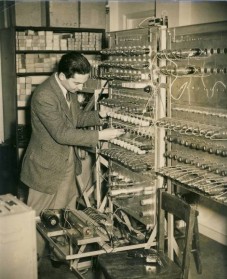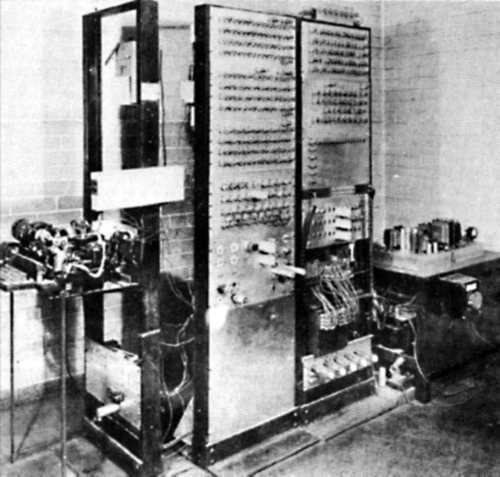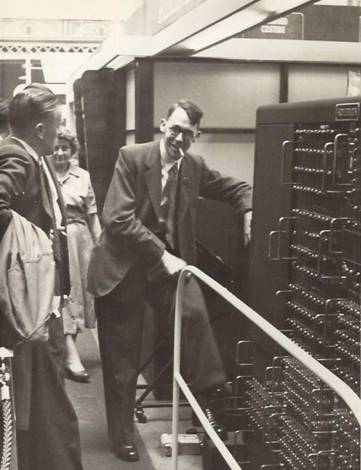| Andrew Booth and the Forgotten Computers |
| Written by Historian | ||||
Page 2 of 3
The APE(X) ComputersAt the end of the 1940's Booth turned his mind to electronic machines, redesigning the ARC2 as the SEC (Simple Electronic Computer), which was then built by a graduate student, Norman Kitz for his 1951 MSc (Eng) dissertation.
Booth's next design was for the on to the APE(X)C All-purpose Electronic (X) Computer, where X could be replaced by the name of any sponsor who came up with the money to build one! The first was the British Rayon Research Association and so the APE(Rayon) Computer was built. The Birkbeck College Annual Report of 1951/52 records: “The APEXC calculator operated successfully for the first time on 2nd May 1952” The APE(X)C used a redesigned magnetic drum built by Wharf Engineering, the company formed by Booth and his father. This company produced magnetic drums for use by the new computer industry and many were exported to the USA. The first model used 415 valves and was huge.
APE(X)C Computer Apart from the APE(R)C there were several one-off computers in the series, including the one used by Birkbeck College and another by University College, London. The APE(N)C was commissioned by the Norwegian Board of Mathematical Machines and went to Oslo and the APE(H)C was commissioned by the British Tabulating Machine Company, which sold Hollerith punch card equipment. The APE(X)C design used punched card technology for its input/output and the BTC was quick to recognize that the electronic computer represented a business opportunity HEC - First UK mass produced computerThe original APE(X)C was built in a barn in Fenny Compton, Warwickshire where Booth's father lived. In 1951 the British Tabulating Company sent a three-man team, led by Dr Raymond Bird, there to copy the circuitry of the machine in order to create what would become the Hollerith Electronic Computer (HEC) and would be the first British computers to go into mass production, In just a few days Bird’s team had copied Andrew Booth’s circuitry and back at BTM’s factory at Letchworth they added extra I/O interfaces getting the pre-production HEC1 working by the end of 1951. BTM management decreed that the HEC would go to the Business Efficiency Exhibition in October 1953 and so a new machine, HEC2, was built in a smart metal cabinet suitable for public display. This was probably the first time that a computer had gone on public display in Britain and a noughts and crosses game served as a demonstration of the potential power of computers.
Ray Bird with the HEC2 at the Business Efficiency Exhibition 1953 Bird realised that it was essential to manufacture a machine that was operationally compatible with BTM’s punch card equipment and at a price that was in line with existing pre-computing technologies.This led to the first production model, the HEC2M, of which eight were sold mainly for technical applications. The successor was the HEC4 which was a commercial data processing machine. Over 70 were sold in the UK and abroad, making it the UK’s best selling computer by volume at the end of the 1950s. After BTM merged with its competitor Powers SAMAS to form ICT, the HEC4 became the ICT 1200 range. The original HEC prototype was kept in store by Birmingham Museums Collection Centre until 2016 when it went on public display at The National Museum of Computing (TNMOC) on Bletchley Park. In this video Ray Bird gives some details of why and how the project originated:
|
||||
| Last Updated ( Monday, 31 October 2022 ) |
 Norman Kitz in 1948, working on the SEC
Norman Kitz in 1948, working on the SEC

